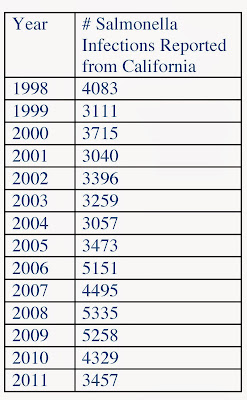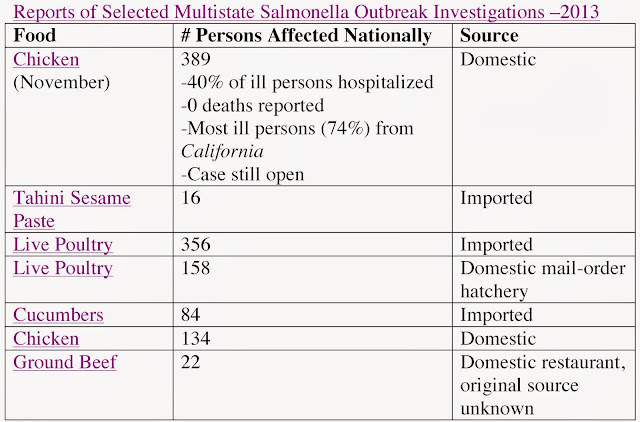
Salmonella and the USDA Action Plan
By Laurie Greene, Associate Editor
The U.S. Department of Agriculture’s (USDA) Food Safety and Inspection Service (FSIS) released its Salmonella Action Plan midweek that outlines the steps it will take to address the most pressing problem it faces—Salmonella in meat and poultry products.
An estimated 1.3 million illnesses can be attributed to Salmonella every year and it is the leading cause of hospitalizations and deaths from foodborne disease. Because of the major public health role of Salmonella infections, the US Department of Health and Human Services has made decreasing the nationwide incidence of these infections by 25% a Healthy People 2020national goal.

|
| CDC National Surveillance Data, updated 1/14/13 |
In 2011, in California alone, there were 20 Salmonella outbreaks, including the 7 multistate outbreaks in which CA had cases, according to CDC’s Foodborne Outbreak Online Database (FOOD).
Salmonella infections in California between 1998 and 2011 have remained between the range of 3000 and 5400.
Among the 2013 sources of Salmonella in the U.S. are chicken, poultry, tahini paste, cucumbers, and beef.
Note:Although outbreak data provide one of the only direct connections between food sources and infection, outbreak investigations are frequently unable to confirm the single contaminated food vehicle, limiting the ability to detect major changes over time.
“Far too many Americans are sickened by Salmonella every year. The aggressive and comprehensive steps detailed in the Salmonella Action Plan will protect consumers by making meat and poultry products safer,” said Under Secretary for Food Safety Elisabeth Hagen.
Modernizing the outdated poultry slaughter inspection system and focusing inspectors’ duties solely on food safety could prevent at least 5,000 illnesses prevented each year.









